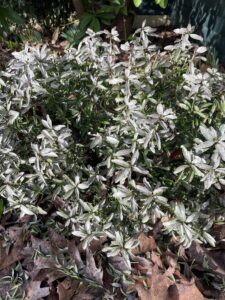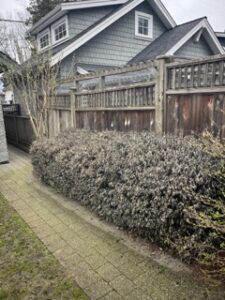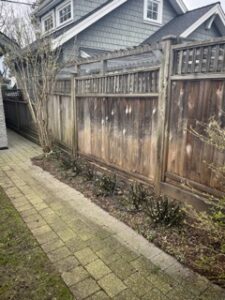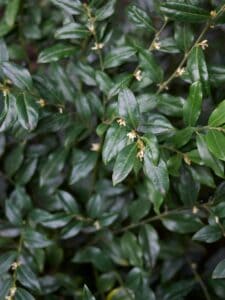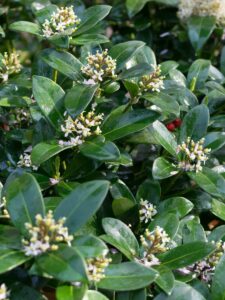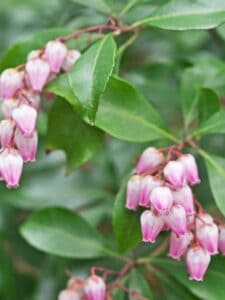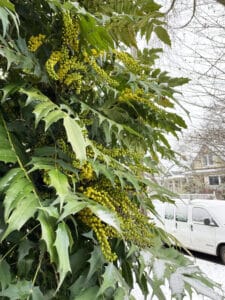Shop Mother’s Day Bouquets
Figaro's Blog
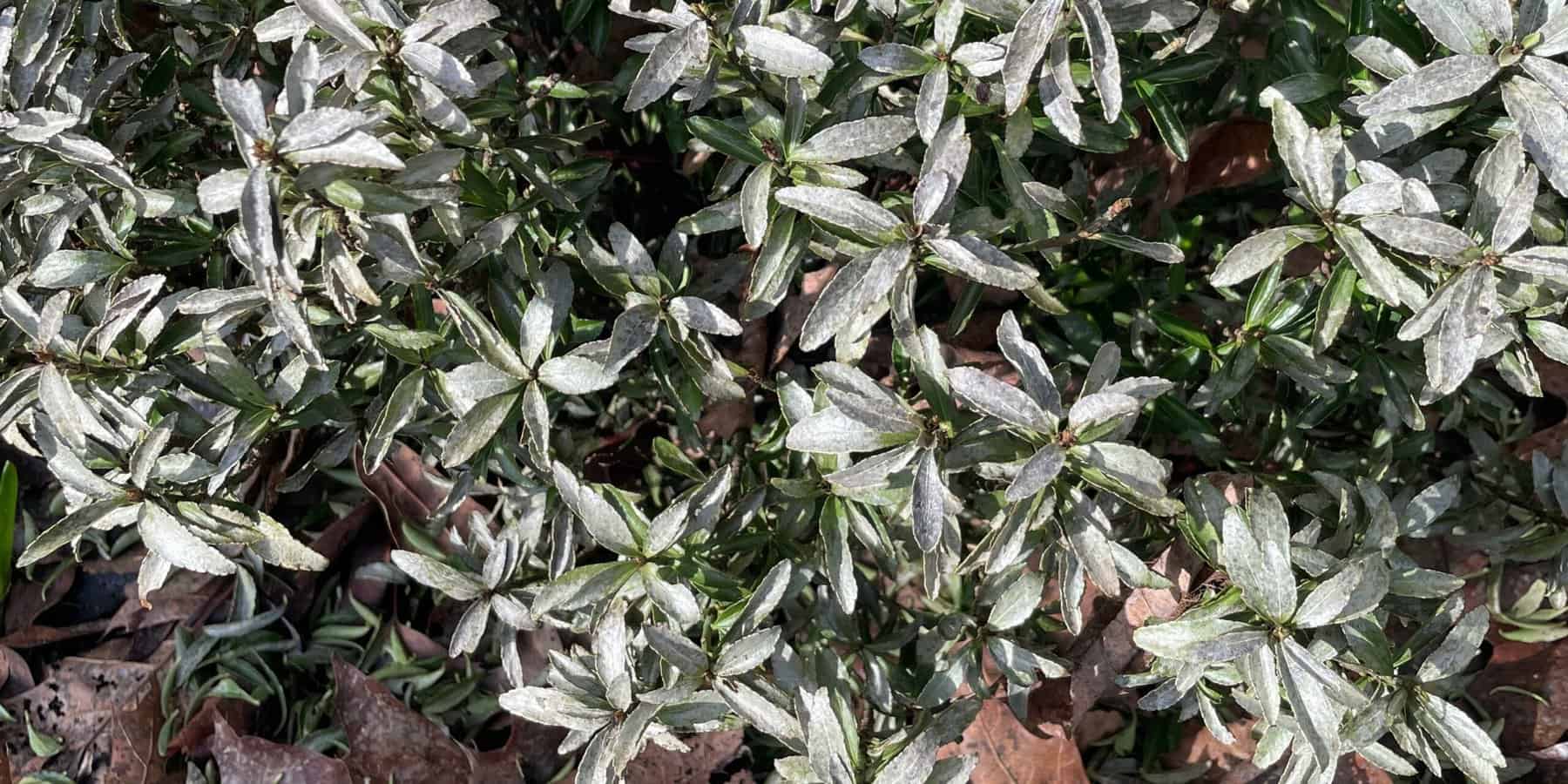
Like many of our customers, we are dealing with winter-damaged broadleaf evergreens and conifers. These normally hardy shrubs were impacted by a very mild winter interrupted by a short, very sudden late-winter cold snap. As a result, broadleaf evergreens (and even some conifers) had their foliage decimated.
The list of shrubs lost or severely damaged includes things you might expect to struggle with cold, including Veronica speciosa (Hebe), Fatsia japonica (Aralia), Ceanothus spp. (California Lilac), and Rosmarinus officinalis (Rosemary). But there were also some surprises: we’ve had Sarcococca ruscifolia, Euonymus fortunei, Prunus lusitanica, and Nandina domestica all suffer frost damage.
As we attempt to figure out and adapt to yet another new gardening challenge resulting from climate change (see also: Preparing Your Garden for a Spring Heatwave), we find ourselves asking: should we be replanting our favourites, or should we seek out more resilient shrubs?
Is my broadleaf evergreen dead?
First, let’s determine whether your shrub is actually dead. The good news is that in many cases, hardy evergreens will rebound. While they’ll lose their frost-damaged leaves, shrubs will produce new growth as spring progresses. To check whether the plant is actually dead (or just appears to be), scrape the outer bark off a lower branch with your fingernail. If it’s green underneath, the plant is alive. If not, try a few different areas of the shrub before giving up on it.
Branch pliability is another indicator of health: if a branch snaps when bent, it is more likely to be dead. Remember: a branch can be dead but the plant can still be alive.
Pruning winter-damaged broadleaf evergreens
If the only green you’re seeing is near the base of the plant, pruning is the best choice. You’ll need heavy-duty secateurs or even a pruning saw to cut the shrub back. Cut back to where green stems or growth is visible, or if severe cases, just above the base.
Replacing winter-damaged broadleaf evergreens
If you decide that your broadleaf evergreen is dead, or is too damaged to be useful or attractive in the garden, it’s time to replace it. Deciding whether to swap it with the same species is a personal choice; if you loved the plant, or it was an integral component of a larger whole (as in a hedge or mass planting), you may opt to simply replace it with the same species. If you go that route, take steps next winter to protect it.
Resilient shrubs for shade and part shade
Choosing extreme-weather-resistant shrubs is another good option. The list of recommended choices below was compiled based on observation (in our own gardens and in gardens around Vancouver) and study. Many of these are “old standbys”: what they might lack in excitement, they make up for in reliability:
Sarcococca hookeriana var. humilis (Low-Growing Himalayan Sweet Box)
We’ve noticed that while the taller, more upright Sweet Box known as Sarcococca ruscifolia suffered severe damage to its leaves, lower-growing S. hookeriana var humilis emerged from the cold snap with only minor damage. While it is a much shorter plant, it does offer the same glossy leaves and incredible winter fragrance.
Ilex crenata ‘Convexa’ (Convex Leaf Japanese Holly)
Hardy to zone 6, this form of Japanese holly is fast growing, durable, and adaptable. It makes a good hedge (whether sheared or left natural). Its dark evergreen leaves make an elegant backdrop in perennial beds and provide a strong structural element in containers. Takes full sun or part shade.
Vaccinium ovatum (Evergreen Huckleberry)
This BC native has attractive, glossy leaves, often with a purple tinge. It produces bell-shaped pink-white flowers followed by purple-black berries. Grows slowly to 6’ tall and is well suited to either sun or shade.
Skimmia japonica (Skimmia)
A tidy, mounted evergreen with fragrant blooms and later, berries, Skimmia is often undervalued as a landscape plant. Low maintenance and easy care, Skimmia thrives in shade or part-shade gardens.
Rhododendron spp. (Rhododendron)
Nearly ubiquitous in Vancouver gardens, the humble rhododendron deserves more love than it gets. A tough plant that thrives in part shade yet tolerates sun, rhodos offer blooms, structure, and—in the case of larger rhodos—wildlife habitat. These shrubs take well to pruning and work well in a range of garden styles.
Camellia spp. (Camellia)
With large, eye-catching blooms over the winter months, Camellias then offer their glossy, dark green leaves as a foil for other plants during the rest of the year. These shade-loving shrubs can get quite large and can be used as a screen or hedge.
Gaultheria shallon (Salal)
Instantly recognizable, this BC native shrub produces clusters of bell-shaped pink or white flowers in the spring, followed by edible blue-black berries. Its leathery, evergreen leaves make it an attractive and versatile plant. For best results, plant in part shade as part of a mixed border or as a ground cover.
Resilient shrubs for sun and part sun
Pieris japonica (Japanese pieris)
Slow growing, early blooming Pieris deserves a second look. Beloved by pollinators such as our native mason bees, this broadleaf evergreen shrub boasts white or pink blooms late winter through early spring. Easy care and unfussy, Pieris makes a good complement to cut flower gardens as well.
Buxus spp. (Boxwood)
Boxwood is popular for good reason: versatile, hardy, and structural, it is an adaptable shrub for the garden. In addition to its traditional use as a hedge or potager edging, Buxus can be used in containers, as part of foundation plantings, or in formal gardens. It would make a good stand-in for the more-sensitive Hebe or Euonymus.
Mahonia spp. (Oregon Grape)
Both the BC native Mahonia aquifolium (Tall Oregon Grape) and hybrid Mahonia x media ‘Charity’ are tall evergreen shrubs featuring serrated, holly-like leaves. They produce striking clusters of bright yellow flowers in early spring, providing a good source of nectar for early pollinators. These are followed by blue-black berries in the summer. An adaptable plant, Oregon Grape grows in full to part sun, and isn’t too fussy about soil.
Arctostaphylos uva-ursi (Kinnikinnick)
Another BC native, Kinnikinnick is a beloved evergreen typically used as a ground cover for tough spaces. Its glossy leaves are complemented by pink blooms and bright red berries. Happy in full sun to part shade and dry soils, Kinnikinnick is low maintenance, drought tolerant, and versatile.
Protecting broadleaf evergreens from frost
Unfortunately, we’re likely to continue to experience extreme weather and temperature fluctuations. One thing we can do to protect the plants we love is to give them extra protection over the winter:
- Provide a thick layer of mulch (dried leaves, straw, or compost) around the base of the shrub
- Water well before a hard freeze is forecasted
- Move container-grown plants into a protected space, or cluster together for reduced airflow and increased insulation
- Wrap or drape small-to-medium-sized shrubs with frost-protection fabric or burlap, or place large overturned pots over smaller shrubs
Figaro’s Garden loves hardy plants!
These are just a few examples of the many beautiful and functional broadleaf evergreens that are hardy in our area (and in temperatures well below our seasonal averages). Visit Figaro’s Garden and ask about great broadleaf evergreen picks for your own garden.
plants make everything better
Whether you're an experienced horticulturist, or looking for your first plant, our team at Figaro's Garden is excited to help you realize your plant and garden dreams. Contact us today or stop by the shop to see what's in-store.

